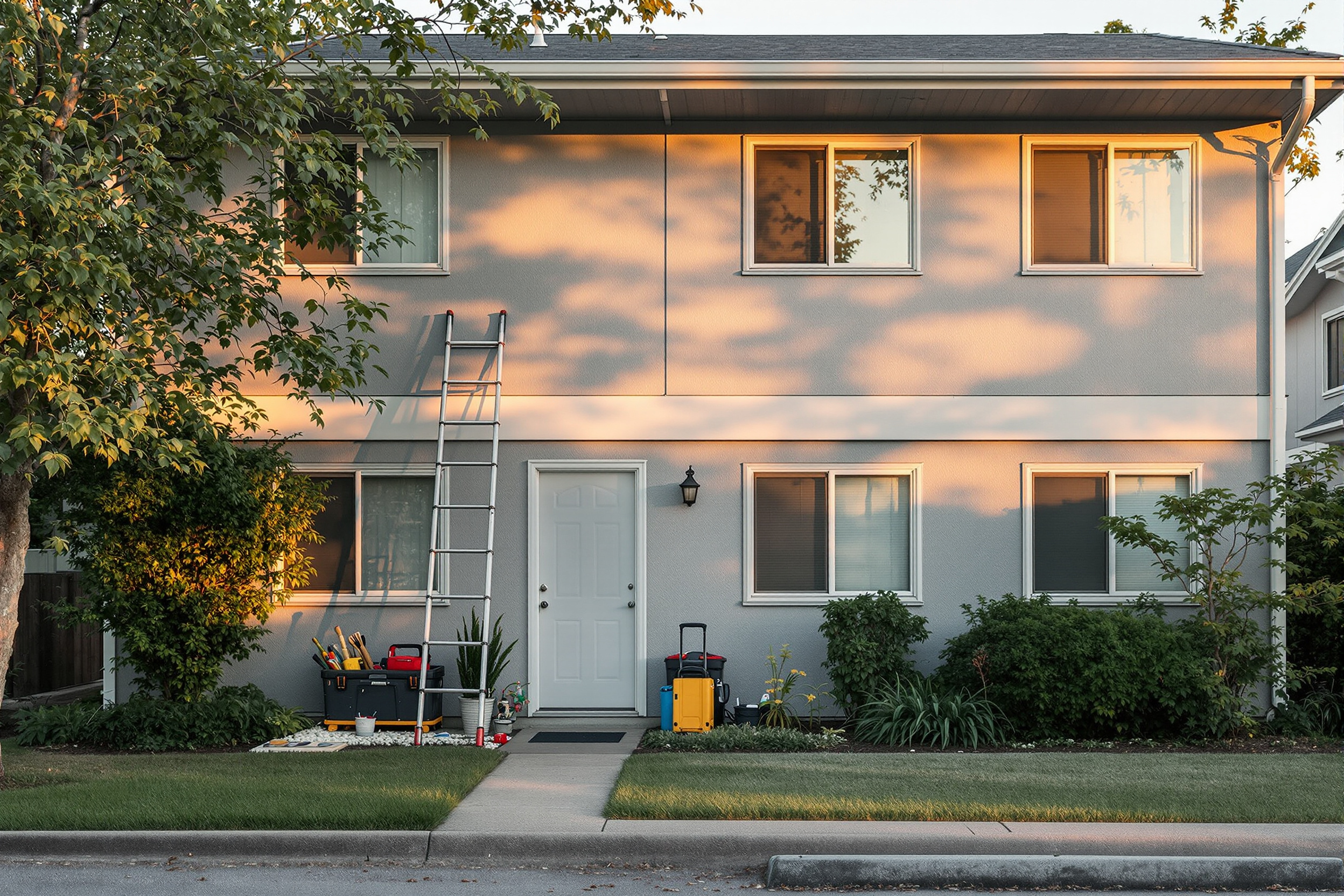The best time to get your landlord insurance policy is between going under contract and closing on the property. This ensures you have coverage in place before any renovations begin or tenants move in.
Securing coverage before closing ensures the property is protected from day one, covering the structure, your liability, and any improvements you make. It also closes the gap left by a standard homeowners' policy, which usually stops applying once the property becomes a rental.
In this guide, we’ll walk through how your coverage should shift from purchase to move-in day, with milestone checklists and helpful add-ons to keep you protected.
Why Does Timing Matter in Buying Landlord Insurance?
Securing a rental dwelling policy at the right moment keeps expensive gaps from opening in your protection. A homeowner's policy usually stops covering losses when a property is used for rental income, so having a landlord policy ready before that change occurs is essential.
Timing affects more than just the switch from owner-occupied to rental:
- Closing Day Requirements: Lenders will not fund without proof of adequate coverage. Miss the deadline, and you risk a delayed closing or costly force-placed insurance.
- Vacancy Clauses: Most policies reduce or void protection after 30–60 days of vacancy. Buying the correct form (or adding a vacancy endorsement) during renovations keeps the dwelling insured while it sits empty.
- Liability While Showing the Unit: Prospective tenants touring the property create slip-and-fall exposure. A policy that starts before marketing begins shields you from those claims.
- Coverage for Upgrades: Materials and tools stored on-site during a rehab are vulnerable to theft or fire. Early coverage ensures the payment for replacements, eliminating the need for out-of-pocket expenses.
- Premium Savings: Quoting 30 days ahead of the effective date often unlocks advance-purchase discounts and lets you compare carriers, rather than rushing and overpaying.
In short, the moment you close is the safest and often cheapest time to lock in landlord insurance, then adjust the policy as you move from renovation to first lease.
Milestone 1: At Property Closing
Act at the closing table to keep protection seamless and lender-approved.
- Obtain a binder before signing: Ask the insurer for a one-page insurance binder showing effective dates, dwelling limit, and landlord liability coverage. Bring it to closing so the lender can fund without delays.
- Coordinate with lender and escrow: Send the binder to the loan officer and escrow agent early. Confirm that the closing documents match the policy name, loan number, and insured amount.
- Review the vacancy clause: Most policies limit or exclude coverage after 30 to 60 days of vacancy. If renovations will leave the home empty, add a vacancy endorsement or builder’s risk rider to avoid costly gaps.
Milestone 2: During Renovations or Turnover
After closing, if the property will sit empty for repairs or turnovers, ask your insurer to add a vacancy or builder’s risk endorsement so fire, theft, and vandalism stay covered beyond the usual 30- or 60-day limit.
Confirm the policy also protects renovation materials stored on-site. It extends liability to contractors working in the home, so stolen appliances, damaged cabinets, or job-site injuries come from the carrier’s pocket, not yours.
Milestone 3: Before Marketing for Tenants
Activate your landlord policy before the first showing so any slip-and-fall or tenant injury claims land with the insurer, not your bank account.
At the same time, make renters' insurance non-negotiable by stating in ads and applications that applicants must provide a current declarations page before keys change hands, protecting their belongings and reinforcing your liability shield.
Milestone 4: Lease-Start Day
Verify that your landlord policy starts at 12:01 a.m. on the tenants’ move-in day so the unit, your liability, and their first steps inside are fully covered from the first minute.
Add property managers, lenders, or condo associations as additional insureds or interests to ensure they receive all claim updates and cancellation notices, keeping every stakeholder protected and paperwork airtight.
Milestone 5: Annual Renewal & Mid-Term Changes
Start rate shopping about thirty days before each annual renewal, update the dwelling limit to today’s rebuild costs, and consider an umbrella policy for added liability headroom.
Review coverage sooner if a rehab project, rent increase, or a new amenity like a pool or hot tub changes the property’s risk profile.
Common Mistakes to Avoid When Buying Landlord Insurance
Even experienced landlords can stumble on simple insurance missteps that cost real money. Keep an eye on these pitfalls before they derail your coverage.
- Closing without insurance binder: Lenders need proof of coverage to fund the loan. Show up without a binder and risk a delayed closing or expensive force-placed insurance.
- Letting vacancy exceed 30 days: Many policies reduce or void coverage once a property sits empty for over a month. Add a vacancy endorsement or builder’s risk rider if renovations or leasing delays will push the home past that limit.
- Listing yourself under a homeowner's form: Quoting the property as a primary residence can lead to denied claims once rental activity begins. Always request a dwelling policy designed for landlords to keep protection airtight.
The Right Time Is Now: Secure Your Rental Asset
Protecting your investment property shouldn't be an afterthought. The perfect time to secure landlord insurance is before you sign a lease or a problem arises. Obie makes it fast and straightforward to get the tailored coverage you need. Don’t leave your asset unprotected for another day. You can get peace of mind in just a few minutes. Find out how easy and affordable it is to safeguard your rental income and property. Request your free landlord insurance quote today.
FAQs on When to Buy Landlord Insurance Policy
Can I wait until I find a tenant?
This is not recommended as you could be denied losses tied to rental use.
Does my lender require coverage at closing?
Yes. Mortgage lenders will not release funds without proof of a landlord policy that meets their minimum dwelling and liability limits.
What if the property sits vacant for months?
Add a vacancy or builder’s risk endorsement, or switch to a vacant‐dwelling policy, so fire, theft, and vandalism stay covered beyond the usual 30–60‐day limit.
Can I start with homeowners, then switch?
Avoid that approach. Start with a landlord (dwelling) form from day one; homeowner’s policies exclude rental activity, making it possible to decline claims after tenants move in.







